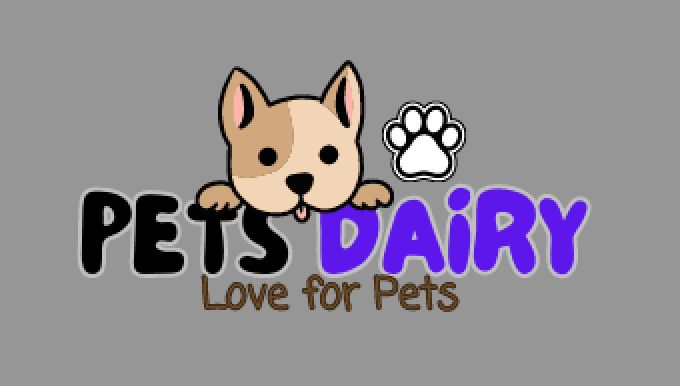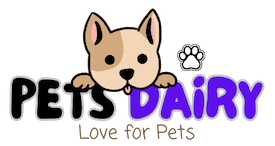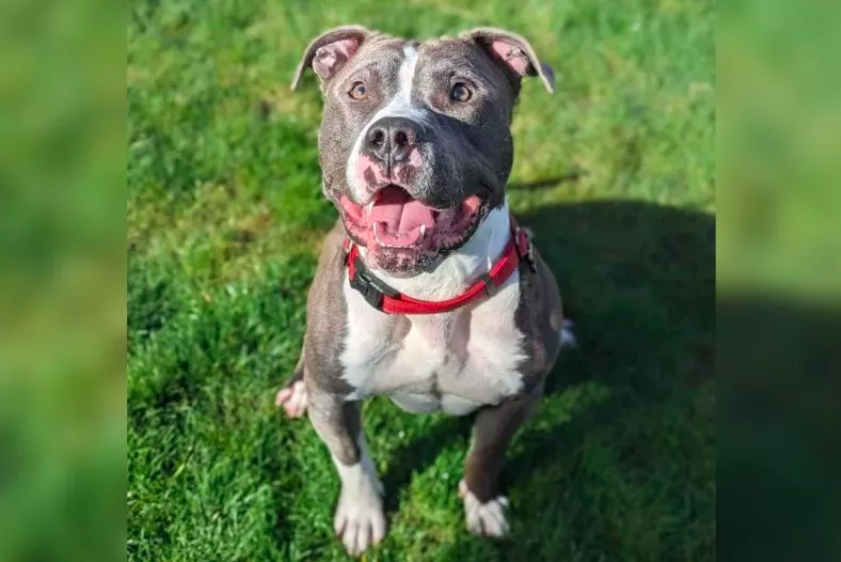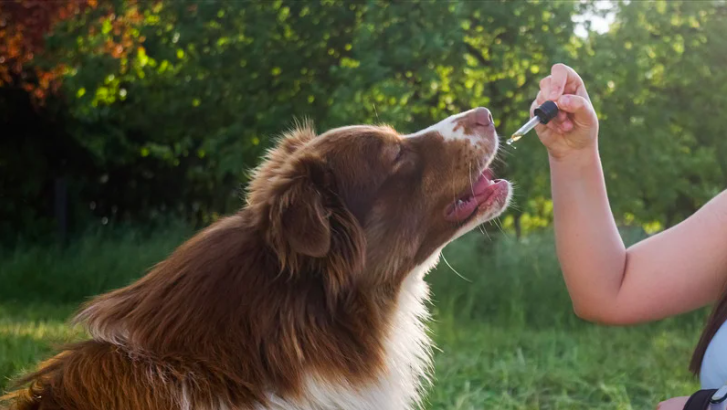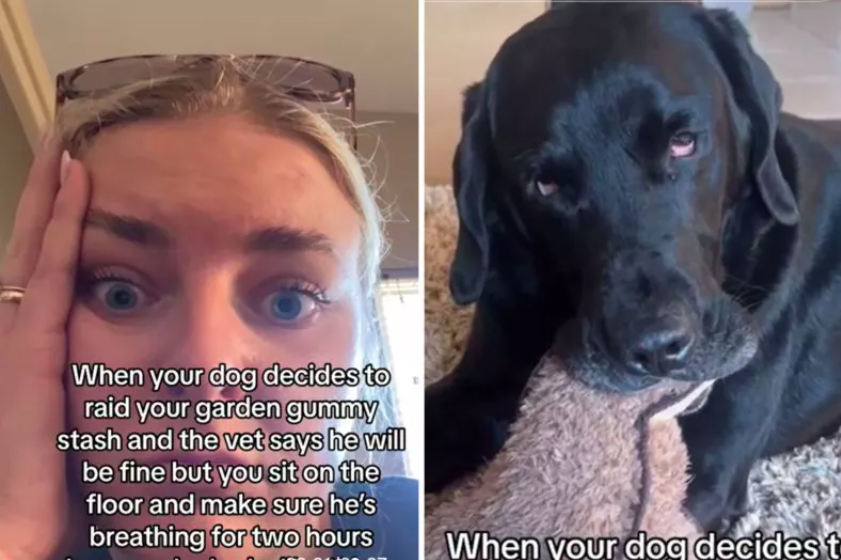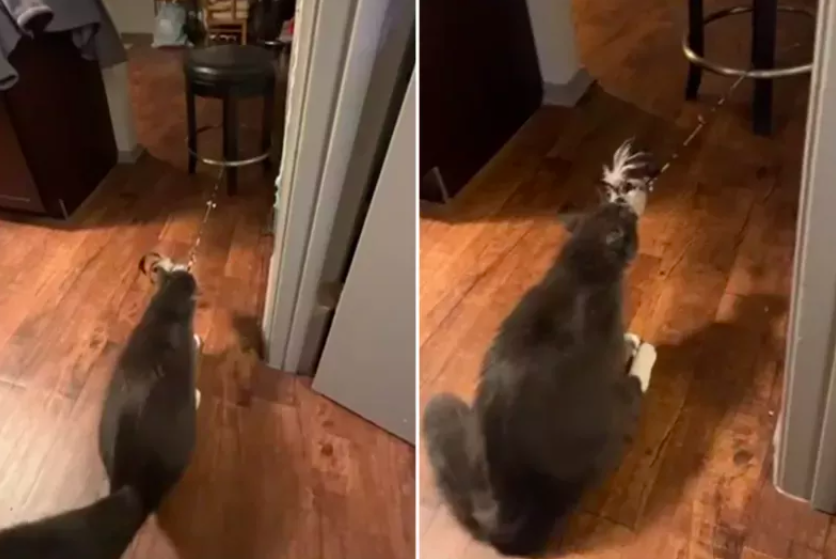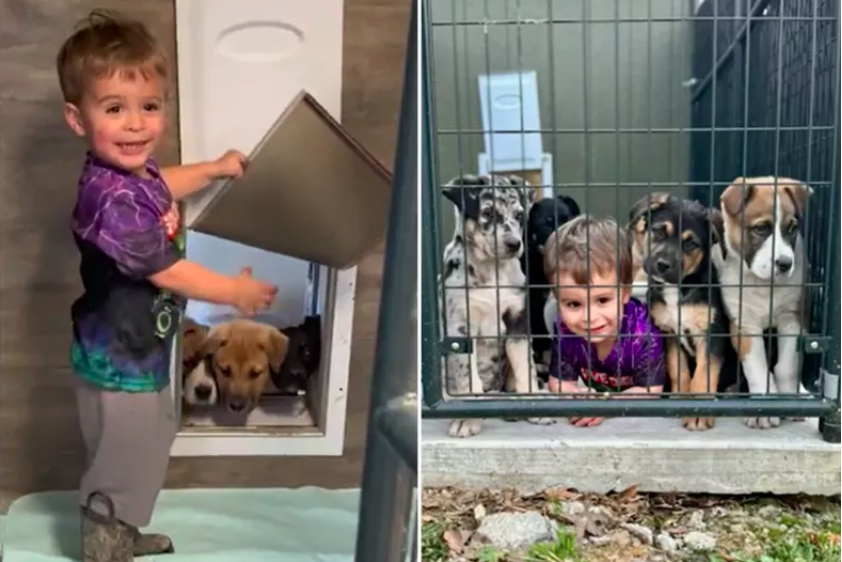Pet Care
Pet Health Tips: Ensuring Your Pet Well-being + Write for us!
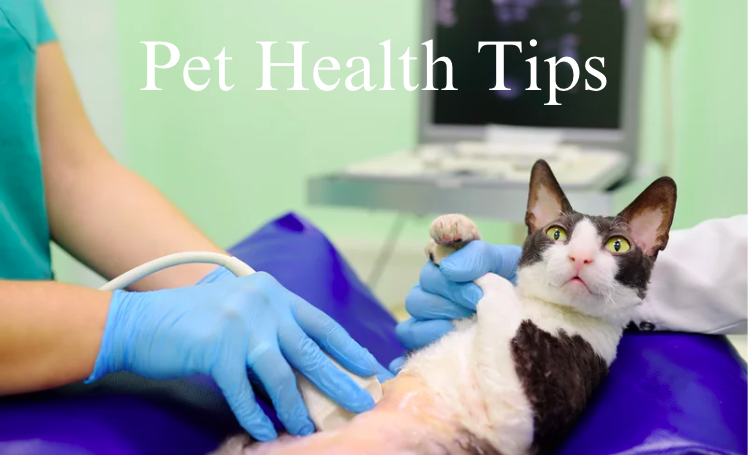
Pet Health Tips: Ensuring Your Pet Well-being + Write for us!
In the world of pet care, one thing is abundantly clear: the health and happiness of your furry friend is paramount. We understand that you’re not just a pet owner; you’re a pet lover, and you want the best for your cherished companion.
That’s why we’ve put together this comprehensive guide to pet health, brimming with tips and advice that will help you keep your pet in top-notch condition.
We also invite talented writers to contribute to our platform. If you’re passionate about pets, read on to learn how you can write for us!
Our pets are not just animals; they are part of the family. Ensuring their well-being is a responsibility we gladly embrace.
To help you on this noble journey, we’ve compiled a wealth of information on pet health, covering various aspects to guarantee that your furry friend lives their best life.
Nutrition: The Foundation of Pet Health
When it comes to your pet’s health, nothing plays a more critical role than proper nutrition. Just as a well-balanced diet is essential for our own well-being, it is equally vital for the furry members of our family.
In this section, we will delve deep into the nuances of pet nutrition, helping you make informed choices that will keep your pet in the pink of health.
Understanding Dietary Needs
Pets, whether they are dogs, cats, birds, or rabbits, have specific dietary needs that must be met to ensure their optimal health. The key is to provide them with a diet that aligns with their age, size, breed, and any existing health conditions.
- Dogs: Canine dietary requirements can vary significantly depending on their age and breed. Puppies need a diet high in protein and calories to support growth, while senior dogs may require a lower-calorie option to maintain a healthy weight. Consulting your veterinarian for breed-specific guidelines is highly recommended.
- Cats: Cats are obligate carnivores, meaning they require a diet high in animal-based proteins. Ensure that your cat’s food contains essential amino acids like taurine, which is vital for feline health. Avoid dog food for cats, as it lacks these crucial nutrients.
- Birds: Feeding your feathered friend the right diet is essential for their well-being. Parrots, for instance, thrive on a mix of fresh fruits, vegetables, and high-quality pellets. Research the specific dietary needs of your bird’s species and consult an avian veterinarian for guidance.
- Small Animals (Rabbits, Guinea Pigs): High-fiber diets are crucial for small animals like rabbits and guinea pigs. A diet rich in hay, fresh vegetables, and limited pellets helps prevent digestive issues and maintains their dental health.
Quality Pet Food Brands
Selecting the right pet food brand is crucial for your pet’s nutrition. Look for reputable brands that use high-quality ingredients, provide complete and balanced nutrition, and are tailored to your pet’s life stage.
- Pro Tip: Check the ingredients list on pet food labels. The first ingredient should be a high-quality protein source, such as “chicken” or “salmon,” and avoid products with excessive fillers like corn or wheat.
Homemade Diets
Some pet owners opt for homemade diets, preparing their pet’s food from scratch. While this can be a viable option, it’s essential to do it correctly.
Homemade diets must be well-balanced, meeting all your pet’s nutritional requirements. Consult your veterinarian or a veterinary nutritionist to create a diet plan that suits your pet.
Special Dietary Needs
If your pet has specific health issues, such as allergies, diabetes, or kidney disease, their dietary needs may differ from the average pet.
In such cases, it’s crucial to work closely with your veterinarian to develop a customized diet plan that addresses these concerns while ensuring your pet receives all the necessary nutrients.
- Pro Tip: Specialized prescription diets are available for many health conditions and can be an essential part of managing your pet’s health.
Water: The Often Overlooked Nutrient
While discussing nutrition, it’s easy to forget the most critical nutrient of all: water. Fresh and clean water should be available to your pet at all times. Proper hydration is vital for digestion, circulation, and overall health.
Exercise: Keeping Your Pet Active
Physical activity is not just a luxury for our pets; it’s a necessity. Just like humans, pets require regular exercise to maintain a healthy body and mind.
In this section, we will explore the significance of exercise for pets and offer practical tips to help you keep your furry friend active and thriving.
Understanding the Importance of Exercise
Exercise is a fundamental component of pet health. Here’s why it matters:
- Physical Fitness: Regular exercise helps pets maintain a healthy weight and prevents obesity. It improves muscle tone and enhances cardiovascular health, increasing overall longevity.
- Mental Stimulation: Exercise is not just about the body; it’s also about the mind. Mental stimulation during play and activity is essential for preventing boredom and related behavior issues.
- Social Interaction: For dogs, exercise provides an opportunity to socialize with other dogs and humans. It strengthens the bond between pets and their owners, fostering trust and companionship.
Tailoring Exercise to Your Pet
Different pets have different exercise needs, so it’s crucial to tailor their activities to their species, breed, age, and individual preferences.
- Dogs: Dogs thrive on physical activity. Long walks, runs, and games of fetch are excellent choices. High-energy breeds like Border Collies or Labradors may require more vigorous exercise, while smaller breeds may be content with shorter, daily walks.
- Cats: Indoor cats benefit from toys that mimic hunting behaviors, such as feather wands and laser pointers. Cats also enjoy climbing structures and scratching posts for both physical activity and mental engagement.
- Birds: Birds need opportunities to fly, so providing a spacious cage or an outdoor aviary is essential. Let them out of their cages for supervised, free-flight time within your home or in a secure outdoor environment.
- Small Animals (Rabbits, Guinea Pigs): These pets love to explore. Provide them with safe, enclosed spaces to roam and play. You can also create obstacle courses to stimulate their curiosity and agility.
Exercise Safety and Caution
While exercise is vital, it’s equally important to exercise caution:
- Weather Considerations: Extreme weather conditions can be harmful to pets. In hot weather, be mindful of heatstroke, and in cold weather, protect your pet from hypothermia.
- Leash and Harness Training: When walking dogs, ensure they are well-trained on a leash and harness to prevent escapes and accidents.
- Supervision: Always supervise playtime to avoid accidents, especially if your pet is interacting with others.
- Age-Appropriate Activities: Adjust exercise intensity as your pet ages. Puppies and kittens are full of energy, while senior pets may have limitations.
- Consult with a Veterinarian: If your pet has specific health concerns or conditions, consult your veterinarian to determine suitable exercise regimens.
Making Exercise Fun
To keep your pet engaged, make exercise fun:
- Variety: Change up activities to prevent boredom. Try new toys or games to pique your pet’s interest.
- Positive Reinforcement: Use treats and praise to reward good behavior and encourage your pet to stay active.
- Play with Your Pet: Spend quality time engaging in activities with your pet. Your active participation enhances the bond between you.
Grooming: A Vital Part of Pet Health
Grooming is often mistakenly considered a superficial aspect of pet care, but in reality, it plays a crucial role in maintaining your pet’s overall health and well-being.
In this section, we will delve into the significance of grooming and offer valuable insights into how you can keep your pet looking and feeling their best.
The Multi-Faceted Role of Grooming
Grooming goes far beyond aesthetics; it encompasses various health-related aspects:
- Coat Health: Regular brushing removes loose fur, prevents matting, and distributes natural oils throughout your pet’s coat. This not only keeps them looking shiny but also prevents skin irritations and hotspots.
- Temperature Regulation: Grooming helps your pet maintain an appropriate body temperature. In the summer, removing excess fur can prevent overheating, while in the winter, a well-kept coat provides insulation.
- Skin Health: Grooming sessions offer the opportunity to inspect your pet’s skin. You can identify lumps, bumps, parasites, or any other skin issues early, which is essential for timely treatment.
Bonding and Trust: Grooming can be a bonding experience for you and your pet. It builds trust and strengthens your relationship, as your pet learns to associate grooming with care and affection.
Grooming Guidelines by Pet Type
Different pets have unique grooming needs, so let’s break it down by species:
- Dogs: The grooming needs of dogs can vary widely based on their breed. Long-haired breeds may require daily brushing to prevent matting, while short-haired breeds benefit from weekly sessions. Some breeds may also need regular professional grooming for haircuts and specific care, such as poodles and Bichon Frises.
- Cats: Cats are generally excellent self-groomers, but they can benefit from regular brushing to reduce shedding and prevent hairballs. It’s essential to introduce grooming early to ensure your cat is comfortable with the process.
- Birds: Feathers require maintenance to keep them in good condition. For birds, this may involve regular misting, preening, and ensuring access to a birdbath. Be cautious when trimming feathers and consult with an avian veterinarian if necessary.
- Small Animals (Rabbits, Guinea Pigs): Long-haired rabbits and guinea pigs need frequent brushing to prevent matting. Keep an eye on their nails, as they may require periodic trimming to prevent overgrowth.
Grooming Tools
Invest in quality grooming tools to make the process smoother and more enjoyable for both you and your pet. Here are some essential grooming tools:
- Brushes and combs: Choose brushes suited to your pet’s coat type. Slicker brushes work well for removing loose hair, while bristle brushes are ideal for short-haired pets.
- Nail clippers: Keep your pet’s nails at an appropriate length to prevent discomfort or injury.
- Shampoo and conditioner: Use pet-specific products to maintain a clean and healthy coat.
- Ear cleaning supplies: Keep your pet’s ears clean and free from wax or debris to prevent infections.
Professional Grooming
For some pets, professional grooming is a must. Professional groomers have the expertise to handle specific breed requirements and can provide services such as haircuts, nail trimming, and ear cleaning.
It’s essential to choose a reputable groomer who prioritizes the well-being of your pet.
Grooming as a Ritual
Making grooming a routine is essential. Create a comfortable and calming environment for your pet during grooming sessions. Offer treats and praise to make it a positive experience.
Remember that the bond you build during grooming contributes to your pet’s overall happiness and health.
Regular Veterinary Check-ups
Routine veterinary check-ups are the cornerstone of responsible pet ownership. Just as humans visit their doctors for regular health assessments, pets require regular visits to veterinarians to ensure their well-being.
In this section, we’ll explore the significance of these check-ups and provide guidance on how to make the most of them.
The Importance of Routine Veterinary Check-ups
Regular veterinary visits offer a multitude of benefits:
- Early Disease Detection: Veterinarians are trained to spot signs of illness that might elude the untrained eye. By identifying health issues early, they can often be treated more effectively, leading to better outcomes for your pet.
- Vaccination and Preventative Care: Vaccinations are a fundamental aspect of pet health. Regular check-ups ensure your pet receives essential vaccinations and preventative treatments, protecting them from common diseases and parasites.
- Dental Health: Oral health is a vital but often overlooked part of your pet’s overall well-being. Regular check-ups can help address dental issues before they become severe, preventing pain and discomfort for your pet.
- Tailored Advice: Veterinarians can provide personalized advice on nutrition, exercise, and other aspects of your pet’s care. They can address your pet’s unique needs and lifestyle, promoting optimal health.
Establishing a Check-up Schedule
The frequency of your pet’s visits may vary depending on their age and health. However, a general guideline is:
- Puppies and Kittens: Young animals require frequent visits, often starting with a series of puppy or kitten vaccinations. These visits typically occur at 6-8 weeks, 10-12 weeks, and 14-16 weeks of age.
- Adult Pets: Once your pet reaches adulthood, annual check-ups are generally sufficient for most pets. This allows your veterinarian to monitor your pet’s health, update vaccinations, and provide preventative care.
- Senior Pets: As pets age, their needs change. For senior pets, consider more frequent visits, perhaps every six months. This allows your veterinarian to address age-related concerns promptly.
What to Expect During a Check-up
During a typical veterinary check-up, your veterinarian will perform several crucial tasks:
- Physical Examination: A thorough physical examination of your pet, from nose to tail, helps detect any abnormalities or signs of illness.
- Vaccination Updates: Your veterinarian will ensure your pet’s vaccinations are up to date and may recommend boosters or new vaccines based on your pet’s lifestyle and risk factors.
- Parasite Control: Preventative measures for parasites, such as fleas, ticks, and heartworm, will be discussed and administered if necessary.
- 4. Dental Evaluation: Your veterinarian will check your pet’s teeth and gums and may recommend dental cleanings or at-home care.
- Nutrition and Diet: Your pet’s diet and nutrition will be discussed to ensure they are receiving the right balance of nutrients for their age and lifestyle.
- Bloodwork: For senior pets, or if specific health concerns are present, bloodwork may be recommended to assess organ function and detect underlying issues.
Preparing for a Veterinary Visit
To make the most of your veterinary check-up, consider the following:
- Bring any previous medical records or notes about your pet’s health.
- Make a list of questions or concerns you have about your pet’s health.
- Bring your pet’s favorite treats or toys to help them feel comfortable.
Developing a Relationship with Your Veterinarian
Building a strong relationship with your veterinarian is vital. Find a veterinarian who understands your pet’s unique needs, communicates effectively, and is open to answering your questions.
Regular check-ups become more effective when you have a trusted partner in your pet’s health care.
Mental Health for Pets
Just as physical health is essential for our pets, their mental well-being is equally vital. Our furry friends experience a range of emotions and mental states that can significantly impact their overall happiness and quality of life.
In this section, we’ll explore the importance of mental health for pets and provide guidance on how to ensure their emotional needs are met.
Recognizing the Importance of Mental Health
Pets, like humans, can experience stress, anxiety, and other emotional states. Their mental health plays a crucial role in their daily lives, affecting their behavior, interaction with their environment, and overall happiness.
- Stress and Anxiety: Pets can feel stressed or anxious due to various factors, including changes in their environment, separation from their owners, or exposure to new or frightening situations.
- Boredom: Boredom can lead to destructive behavior in pets. Engaging their minds with mental stimulation helps prevent unwanted behaviors.
- Social Interaction: Socialization is essential for many pets. Dogs, for example, thrive on human and canine interaction. Cats can experience loneliness if they lack companionship.
Tips for Promoting Mental Well-being
Maintaining your pet’s mental health involves enriching their environment and providing activities that stimulate their minds. Here are some essential tips:
- Interactive Toys: Choose toys that challenge your pet’s problem-solving skills. Puzzle feeders, treat-dispensing toys, and interactive games provide mental stimulation.
- Novel Experiences: Introduce your pet to new experiences and environments. This can include taking your dog to different parks or exposing your cat to novel scents and sounds.
- Training and Tricks: Teaching your pet new tricks or commands is an excellent way to engage their minds. Positive reinforcement training builds a bond between you and your pet.
- Socialization: Arrange playdates for your dog with other friendly dogs. For cats, create vertical spaces and hiding spots where they can observe and interact with their environment.
- Mental Health Activities: Consider activities designed specifically for mental health, such as agility courses for dogs or puzzle games for cats.
- Pet Communication: Learn to understand your pet’s body language and vocalizations. Knowing when your pet is anxious or excited can help you respond appropriately.
Recognizing Stress and Anxiety
It’s crucial to recognize the signs of stress or anxiety in your pet, as early intervention can alleviate their emotional distress. Common signs of stress in pets may include:
- Excessive panting or drooling in dogs.
- Hiding or aggression in cats.
- Changes in eating or grooming habits.
- Unusual vocalizations.
- Agitation, restlessness, or destructive behavior.
If you notice these signs in your pet, it’s essential to address the underlying causes and consult with a veterinarian or a professional animal behaviorist if necessary.
The Power of Routine and Consistency
Pets thrive on routine and consistency. By establishing a stable and predictable environment for your pet, you can create a sense of security that positively impacts their mental health.
Regular feeding, exercise, and playtimes contribute to a happy and content pet.
Safety Tips for Your Pet
Keeping your beloved companion safe is a top priority for any pet owner. In this section, we will delve into crucial safety tips that will help protect your pet from harm and ensure they live a long, happy, and healthy life.
Pet-Proofing Your Home
Ensuring your home is safe for your pet is essential. Pet-proofing not only protects your pet but also safeguards your belongings. Here are some key considerations:
- Remove Hazardous Substances: Keep toxic substances such as cleaning products, medications, and chemicals out of your pet’s reach. Store them securely in cabinets or high shelves.
- Secure Trash Bins: Pets are notorious for digging into trash cans. Use pet-proof trash bins or keep them in a cabinet to prevent your pet from accessing harmful items.
- Electrical Cords and Outlets: Chew-proof electrical cords are essential, especially for puppies and kittens. Cover outlets to prevent curious pets from sticking their noses where they don’t belong.
- Keep Sharp Objects Away: Store sharp objects like scissors, razors, or tools out of your pet’s reach. These items can cause serious injuries if your pet decides to investigate.
- Childproof Latches: Install childproof latches on cabinets or doors to restrict your pet’s access to potentially dangerous areas.
- Lock Away Small Objects: Small objects like rubber bands, buttons, or coins can pose choking hazards. Make sure they are kept in areas inaccessible to your pet.
Outdoor Safety
Safety outdoors is equally important, as it’s where your pet can encounter various risks. Here’s how to ensure your pet stays safe while enjoying the great outdoors:
- Fencing: Ensure your yard has a secure and escape-proof fence. Regularly inspect it for gaps or damage to prevent your pet from wandering off.
- Supervision: Always supervise your pet while outdoors. This helps prevent accidents and ensures your pet doesn’t ingest harmful plants or other substances.
- Leash and Identification: When walking your pet, use a leash and ensure they wear proper identification, including a collar with an ID tag and, ideally, a microchip.
- Secure the Pool: If you have a pool, consider installing a fence or a safety cover to prevent accidental drowning. Not all dogs are natural swimmers.
- Safe Outdoor Plants: Be aware of toxic plants in your garden or yard. Research the plants in your outdoor space and remove any that could harm your pet.
Car Safety
Traveling with your pet requires safety precautions, too. Whether you’re going to the veterinarian or embarking on a road trip, here’s how to ensure your pet’s safety during car journeys:
- Use a Pet Carrier or Seatbelt: For small pets, a carrier is the safest option. For larger pets, use a pet seatbelt or a safety harness designed for cars.
- Don’t Leave Your Pet Unattended: Never leave your pet in a parked car, especially in hot weather. Temperatures can rise rapidly, causing heatstroke and even death.
- Secure the Windows: Roll up the windows sufficiently to prevent your pet from sticking their head out, as this can be dangerous.
Emergency Preparedness
Being prepared for emergencies is a responsible part of pet ownership. Have the following on hand:
- A pet first aid kit.
- Contact information for an emergency veterinarian.
- An evacuation plan in case of natural disasters.
Pet Health Myths Busted
Myths and misconceptions about pet health abound, leading pet owners down the wrong path and potentially harming their beloved companions.
In this section, we’ll debunk some of the most prevalent pet health myths, ensuring that you have accurate information to provide the best care for your furry friends.
Myth 1: “A Warm, Dry Nose Means Your Pet Is Sick.”
Fact: This is a common misconception. A warm, dry nose in your pet is not necessarily a sign of illness. Dogs and cats have varying nose conditions, and it’s normal for their noses to change from wet to dry throughout the day.
To assess your pet’s health, look for other symptoms like lethargy, changes in appetite, or unusual behaviors.
Myth 2: “Cats Always Land on Their Feet.”
Fact: While cats are known for their agility, it’s a myth that they always land on their feet when they fall. Cats are more likely to land on their feet when they fall from significant heights, but they can still get injured from high falls.
It’s essential to keep windows secure and provide safe, elevated perches for your feline friend.
Myth 3: “Dogs Only Wag Their Tails When They’re Happy.”
Fact: While a wagging tail can indicate happiness, it’s not the only emotion associated with this behavior. Dogs wag their tails for various reasons, including excitement, anxiety, or even fear.
To understand your dog’s emotions, look at the context, body language, and overall behavior.
Myth 4: “Pets Don’t Need Dental Care.”
Fact: Dental health is crucial for pets, just as it is for humans. Neglecting dental care can lead to dental disease, which can affect your pet’s overall health.
Regular brushing, professional cleanings, and dental chews can prevent dental issues, ensuring your pet’s mouth stays healthy.
Myth 5: “Pets Age Seven Years for Every Human Year.”
Fact: The idea that pets age seven years for every human year is an oversimplification. The aging rate of pets varies depending on species and breed.
Smaller dogs tend to live longer than larger ones, and cats age differently than dogs. Consult your veterinarian to understand your specific pet’s aging process and discuss appropriate care for their life stage.
Conclusion
Your pet’s health is a precious gift, and by following these tips, you can ensure they lead a long, happy life by your side. Remember that pet health is a continuous journey, and a well-cared-for pet is a happy pet.
Don’t forget to write for us and share your pet care expertise with our community.
Questions People Also Ask: (FAQs)
Can I feed my dog a homemade diet?
While it’s possible, it’s best to consult with a veterinarian to ensure the diet is well-balanced and meets your dog’s specific nutritional needs.
How often should I groom my long-haired cat?
Long-haired cats benefit from daily brushing to prevent matting and reduce shedding.
What vaccines are essential for my puppy?
Core vaccines for puppies typically include those for distemper, parvovirus, and rabies. Consult your vet for a vaccination schedule.
What are some signs of stress in rabbits?
Signs of stress in rabbits can include overgrooming, aggression, changes in eating habits, and huddling in a corner.
How can I introduce a new pet to my existing pet at home?
The key is gradual introduction. Keep them separated initially and allow them to get accustomed to each other’s scents before a face-to-face meeting. Seek advice from a professional if needed.
If you’re passionate about pet care and have valuable insights to share, consider becoming a contributor to our platform. Together, we can ensure that pets all over the world live their best lives.
We appreciate you for taking the time to read this article!
Finally, we hope you found this article interesting? And what do you think about ”Pet Health Tips: Ensuring Your Pet Well-being + write for us!!?”
Please feel free to share or inform your friends about this article and this site, thanks!
And let us know if you observe something that isn’t quite right.
Pet Care
Heartwarming Moment: Man and Dog Share Playtime on the Slide
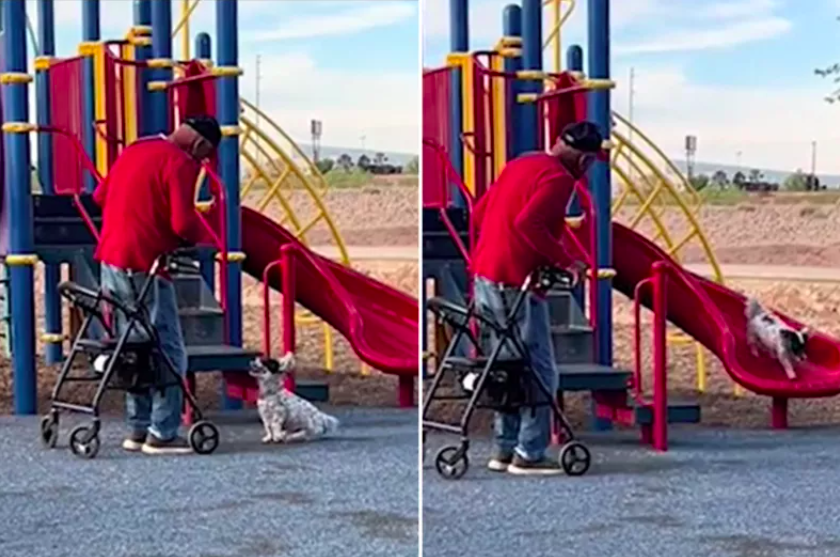
Heartwarming Moment: Man and Dog Share Playtime on the Slide
Introduction: A Tale of Joy and Connection
In a world often filled with hustle and bustle, it’s the small, heartwarming moments that remind us of the beauty of life. Recently, a touching scene unfolded at a playground in El Paso, Texas, where a man and his canine companion shared a moment of pure joy on a slide. This heartwarming interaction captured the essence of the special bond between humans and their furry friends, captivating the hearts of millions across the globe.
A Playful Encounter
On a typical afternoon, Jennifer Lopez, accompanied by her children, stumbled upon a heartwarming sight at a local playground. Instead of children frolicking on the equipment, it was a man and his beloved dog who took center stage. The man, exuding happiness, encouraged his furry friend to ascend the slide before gleefully sliding down, accompanied by cheers and treats from his devoted owner.
Capturing the Moment
Moved by the simplicity and beauty of the scene, Jennifer Lopez shared the heartwarming encounter on TikTok, where it quickly gained traction, resonating with viewers far and wide. In just a matter of days, the video amassed millions of views and garnered an outpouring of love and admiration for the undeniable bond between the man and his canine companion.
A Lesson in Appreciating Life’s Simplicity
For Jennifer Lopez, the encounter served as a poignant reminder of the beauty found in life’s simplest pleasures. Amidst personal struggles and moments of despair, witnessing the sheer joy radiating from the man and his dog instilled a newfound appreciation for life’s blessings and the power of unconditional love.
Community Response and Reflections
The viral TikTok video sparked an overwhelming response from viewers, with thousands expressing gratitude for the heartwarming moment shared by Jennifer Lopez. Comments flooded in, praising the unwavering bond between the man and his furry friend and highlighting the profound impact of their playful interaction.
FAQs (Frequently Asked Questions)
What inspired Jennifer Lopez to share the heartwarming encounter on TikTok?
Jennifer Lopez was deeply moved by the joyful interaction between the man and his dog at the playground, prompting her to share the heartwarming moment on TikTok to spread positivity and uplift others.
How did the viral video impact Jennifer Lopez?
The viral video served as a source of inspiration and hope for Jennifer Lopez, offering a fresh perspective on life’s challenges and reminding her of the beauty found in simple, everyday moments.
What message did viewers take away from the heartwarming encounter?
Viewers were touched by the unconditional love and joy exhibited by the man and his dog, emphasizing the importance of cherishing life’s simple pleasures and fostering meaningful connections with loved ones, both human and animal.
How did the viral video contribute to the conversation surrounding mental health and well-being?
The heartwarming encounter depicted in the viral video served as a beacon of hope for individuals struggling with mental health issues, offering a reminder of the healing power of love, companionship, and moments of joy.
What does the heartwarming encounter symbolize?
The heartwarming encounter symbolizes the profound bond between humans and animals and underscores the significance of finding joy and connection in everyday experiences, even amidst life’s challenges.
We appreciate you for taking the time to read this article!
Finally, we hope you found this article interesting? And what do you think about ”Heartwarming Moment: Man and Dog Share Playtime on the Slide!?”
Please feel free to share or inform your friends about this article and this site, thanks!
And let us know if you observe something that isn’t quite right.
Source: Newsweek
Pet Care
Understanding the Difference: Dog Parent vs. Owner
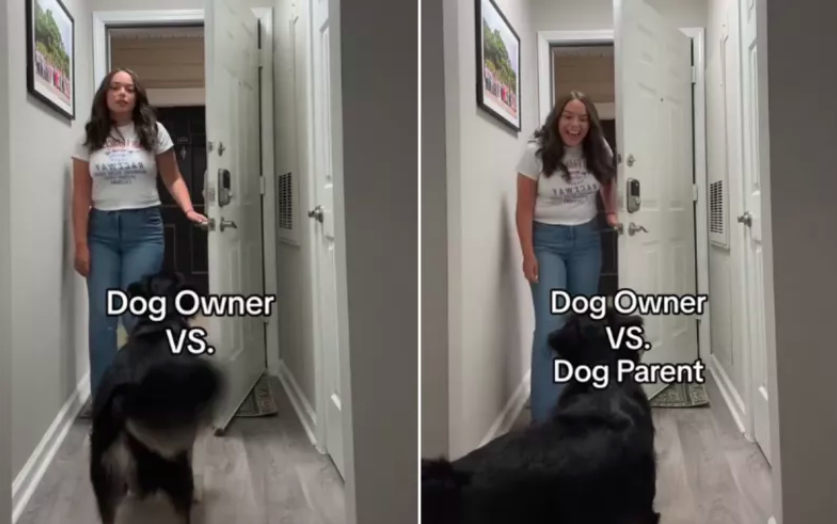
Understanding the Difference: Dog Parent vs. Owner
Embracing the Role: Dog Parenting vs. Ownership
In a heartfelt exploration of the human-canine bond, Shelby Susnick from Atlanta, Georgia, sheds light on the nuanced difference between being a dog parent and a dog owner. While many cherish their pets as cherished companions, Susnick emphasizes a deeper connection that transcends mere ownership.
Family Dynamics: Viewing Dogs as Family Members
For Susnick, the distinction lies in how one perceives their furry companion—are they simply an animal one owns, or an integral part of the family? Dog parents often prioritize their pet’s well-being, with schedules revolving around their canine companion’s needs, such as ensuring they are not left alone for extended periods.
Love Beyond Ownership: Dogs as Family
Susnick’s bond with her dog Russell exemplifies this sentiment. Russell, a rehomed dog who survived parvovirus thanks to Susnick’s love and care, is more than just a pet; he’s her son. Through her TikTok videos, Susnick shares glimpses of the joyous life Russell leads, filled with love, playtime, and adventures.
Defining Moments: A Video on Dog Parenting
In a recent TikTok video, Susnick addresses the distinction between being a dog parent and an owner. Through relatable scenarios, she illustrates how dog parents prioritize empathy, companionship, and understanding, viewing their pet as a cherished member of the family rather than a possession.
Community Response: Embracing Dog Parenthood
Susnick’s video resonated deeply with dog lovers worldwide, sparking conversations about the evolving role of pet ownership. With over 1.3 million views and growing, the video has inspired many to reflect on their relationship with their furry companions and strive to embody the qualities of a dog parent.
Frequently Asked Questions (FAQs)
What distinguishes a dog parent from a dog owner?
A dog parent views their canine companion as a cherished family member, prioritizing empathy, companionship, and understanding.
How does Shelby Susnick’s experience with her dog Russell exemplify dog parenthood?
Susnick’s bond with Russell, a rehomed dog who survived parvovirus, illustrates the deep love and commitment of a dog parent beyond mere ownership.
What prompted Susnick to create the TikTok video on dog parenting?
Susnick’s desire to address misconceptions and highlight the unique bond between dogs and their human companions inspired her to create the video.
Why did Susnick’s video resonate with viewers, garnering over 1.3 million views?
The video struck a chord with dog lovers worldwide, sparking discussions about empathy, companionship, and the evolving role of pet ownership.
How can individuals transition from being dog owners to dog parents?
By prioritizing empathy, spending quality time with their pets, and viewing them as integral family members, individuals can cultivate a deeper connection with their canine companions.
We appreciate you for taking the time to read this article!
Finally, we hope you found this article interesting? And what do you think about ”Understanding the Difference: Dog Parent vs. Owner!?”
Please feel free to share or inform your friends about this article and this site, thanks!
And let us know if you observe something that isn’t quite right.
References: Newsweek: Link to original article
Pet Care
Heartfelt Tale: Dog’s Unusual Behavior Sparks Grief Discussion

Heartfelt Tale: Dog’s Unusual Behavior Sparks Grief Discussion
Unveiling a Canine’s Grieving Heart: Bowser’s Touching Tribute to His Sister
The loss of a loved one reverberates deeply within every corner of the human heart, but what about our furry companions? In a poignant revelation that tugged at heartstrings across the internet, a dog owner shared the touching story of Bowser, whose world was forever altered by the passing of his beloved sister, Sasha.
Since Sasha’s departure, Bowser has embarked on a peculiar journey of grief, manifesting in a poignant refusal to eat from his bowl—a behavior that has sparked a profound discussion on canine emotions and resilience.
A Tender Moment Unfolds: Bowser’s Human-Like Gestures
In a heartwarming display of empathy and connection, Bowser, a mastiff with an indomitable spirit, has found solace in an unexpected ritual: dining at the table, spoonfed homemade meals of ground beef, black beans, and brown rice.
His owner’s TikTok post, shared under the username bowserthemastiff, captured the essence of Bowser’s newfound habit, offering a glimpse into the depth of his emotional world following Sasha’s passing.
As Bowser delicately savors each morsel, his poignant gesture transcends mere sustenance, serving as a testament to the enduring bond he shared with his sister.
Navigating the Landscape of Canine Grief: Insights from Experts
Dogs, like humans, are not immune to the profound impact of loss. The American Kennel Club affirms that dogs possess the capacity for grief, often exhibiting behavioral changes in response to the loss of a companion.
Signs of canine grief may include withdrawal, decreased appetite, lethargy, and vocalizations, among others. As Bowser grapples with the absence of his sister, his refusal to eat from his bowl emerges as a poignant manifestation of his grief—a poignant reminder of the depth of emotion that our beloved pets experience.
Viral Sensation: Bowser’s Tale Resonates Across Social Media
Bowser’s touching tribute to his sister swiftly captivated audiences worldwide, eliciting an outpouring of empathy and support from viewers across TikTok.
With over 252,200 views and 10,100 likes, Bowser’s story has transcended the confines of social media, sparking a meaningful dialogue on the complexities of canine emotion and resilience in the face of loss.
As comments overflow with messages of solidarity and compassion, Bowser’s journey serves as a poignant reminder of the enduring bonds that unite humans and their cherished companions.
@bowserthemastiff #saddog #spoileddog #dogs #bigdogs #bowsersworld #fyp #pickyeater #dogdad #cutedog #dogsoftiktok #bigdogsoftiktok #mastiffsoftiktok #mastiffs #englishmastiff #petsoftiktok #funnydogvideos #doggo #dogfacts #bigbaby
Community Voices: Echoes of Empathy and Understanding
In response to Bowser’s heartfelt tale, social media users from far and wide have shared their own experiences of grief and resilience with unwavering compassion.
From heartfelt anecdotes to practical advice, the online community has rallied behind Bowser, offering words of encouragement and solace during his time of need.
As each comment serves as a beacon of empathy, Bowser’s journey emerges as a testament to the profound impact of companionship and the resilience of the human-animal bond.
Final Words of Reflection
As Bowser navigates the labyrinth of grief, his journey serves as a poignant reminder of the profound depth of emotion that transcends species boundaries.
In honoring the memory of his beloved sister, Sasha, Bowser embodies the resilience of the canine spirit, demonstrating the power of love and companionship to endure even in the face of loss.
As we bear witness to Bowser’s poignant tribute, may we cherish the bonds that unite us with our furry companions, finding solace in the enduring warmth of their unconditional love.
Frequently Asked Questions (FAQs )
What prompted Bowser’s refusal to eat from his bowl?
- Bowser’s refusal to eat from his bowl emerged as a poignant response to the loss of his sister, Sasha, reflecting his profound sense of grief and emotional upheaval.
How have social media users responded to Bowser’s story?
- Social media users have rallied behind Bowser with messages of empathy and support, sharing their own experiences of loss and resilience in solidarity with his journey.
What insights do experts offer regarding canine grief?
- Experts affirm that dogs are capable of experiencing grief, often exhibiting behavioral changes in response to the loss of a companion, highlighting the depth of emotion that our beloved pets possess.
What role does companionship play in Bowser’s journey through grief?
- Bowser’s enduring bond with his sister, Sasha, underscores the profound impact of companionship in navigating the complexities of grief, serving as a source of solace and resilience amidst loss.
How can pet owners support a grieving dog like Bowser?
- Pet owners can offer comfort and reassurance to a grieving dog by providing a nurturing environment, engaging in familiar routines, and offering gentle encouragement and affection during this challenging time.
We appreciate you for taking the time to read this article!
Finally, we hope you found this article interesting? And what do you think about ”Heartfelt Tale: Dog’s Unusual Behavior Sparks Grief Discussion!?”
Please feel free to share or inform your friends about this article and this site, thanks!
And let us know if you observe something that isn’t quite right.
Source: Newsweek
-

 Pet Care2 years ago
Pet Care2 years agoThe Best Dog Collars For 2022
-

 Dogs2 years ago
Dogs2 years agoBichon Frise: The Happy, Playful, and Cuddly Companion
-

 Trending Pet Stories11 months ago
Trending Pet Stories11 months ago2023 ‘World’s Ugliest Dog’ Winner: Scooter’s Tale of Resilience
-

 Animals2 years ago
Animals2 years agoAre There Animals Having Down Syndrome?
-

 Pets2 years ago
Pets2 years agoThe Fascinating World Of The Red Chameleon
-

 Dogs2 years ago
Dogs2 years agoTop 10 Most Popular Dog Breeds According To AKC.
-

 Dogs2 years ago
Dogs2 years ago21 Dog Breeds That Resemble Bears Or Teddy Bears!
-

 Dogs2 years ago
Dogs2 years agoEskimo Dogs from Canada – What Are They? – Find Out!
